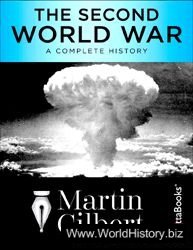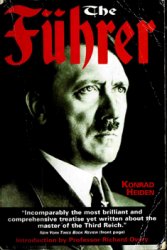This Is one of the best Templar-Inspired novels, Navarro alternating between a modern-day Investigation Into a mutilated body at Turin Cathedral and a well-told, and In large part nicely conceived, secret history of the Shroud. In this, the Templars-and a ruthless secret brotherhood from the biblical town of Edessa-are the antagonists.
The Templars are portrayed, as one of the Investigators says, ‘as supermen who can do anything’ whose most sacred mission, once they have blackmailed the Byzantine emperor to hand It over. Is to protect the
Shroud. They manage to smuggle it out of Acre just before the Holy Land falls in 1291, but their annus horribilis, 1307, forces the order into desperate measures. One of the plotters trying to get his hands on the Shroud is said to be a direct descendant of Geoffrey of Charney, who burned with James of Molay. This makes possible sense as the widow of a man called Charney, who may have been the nephew of Geoffrey of Charney, put the Shroud on display in 1357. Navarro suggests that the Templars survived-initially in such places as Portugal, where, as she correctly notes, the order was simply nationalised, and in Scotland-and are so powerful today that they can, with impunity, organise the assassination of policemen who get too close to their secret.
Navarro tantalises readers with the idea that ‘there was a figure to whom the Templars prayed throughout the world though His name was not Baphomet’. In secret chapel meetings, she suggests they worshipped ‘a painting, an image of a strange figure, an idol’. Wisely, she does not elucidate, so the reader can take their pick from the usual suspects: Sophia the Greek goddess of wisdom, the Prophet Mohammed, the mummified head of Jesus, an Egyptian cat or the head of a Sufi martyr.
Raymond Khoury The Last Templar (2005)
Khoury used to write for BBC TV’s superior spy drama
Spooks and he kicks off his bestseiiing novei with a stunning conceit, as four horsemen dressed as Tempiars storm the opening of an exhibition of Vatican artefacts in New York. As FBi agent Sean Reiiiy and archaeoiogist Toss Chaykin investigate, they discover a secret that has iain buried for a thousand years.
As a page turner, Khourys ‘deadiy game of cat and mouse across three continents’ is as compeiiing as Dan Brown’s noveis. Like Brown and Berry, he finds the idea that the Tempiars’ reai treasure was goid, money or the medievai equivaient of traveiier’s cheques just too mundane. So he has a Tempiarship caiied Falcon Temple setting saii on the order of the Grand Master days before the faii of Acre with a mysterious chest that contains the writings of ‘a man the entire worid knew as Jesus Christ’. This seems to conflate two historicai events: the reai removai of the Tempiar treasure from the Hoiy Land and the activities of a disgraced Tempiar sergeant caiied Roger of Fior who made a fortune by ferrying the desperate and weaithy out of Acre in his gaiiey caiied the Falcon. Khoury aiso mentions the iegend of the Tempiars’ maritime escape, specificaiiy the fleet of eighteen gaiieys that saiied out of La Rocheiie the night before the Tempiars were arrested in 1307, never to be seen again.
For Khourys Tempiars, the treasure is a sideshow. Their reai purpose is to unite the three reiigions that heid sway in medievai times-Christianity, Judaism and isiam-by exposing the fraud at the heart of the resurrection myth and humbling the arrogant clergy. It is at this point that fiction and history finally part company for good. But this final implausibilitydoes not spoil the fun.
Steve Berry The Templar Legacy (2006)
This blockbuster never quite recovers from having a hero named Cotton (‘it’s a long story,’ he says whenever someone asks, which they do tediously often) and an evil Templar mastermind called Raymond do Roquefort who wants to bring Christianity to its knees and restore the Templars to their former power by publishing a secret gospel which proves that Jesus never physically came back from the dead.
In interviews. Berry talks as if the Templars are old chums so it would be intriguing to discover where he gets some of his ideas from. He often quotes the Templar Rule in the novel, suggesting that it forbade knights from washing, though nobody who comes into contact with his Templars seems deterred by body odours. And his imagination goes into overdrive when it comes to James of Malay’s burning. He has King Philip watching dispassionately, though the historical sources seem pretty clear that he was not present, and then a crack squad of Templars swimming across the Seine to fetch the Master’s burnt bones back in their mouths. That said. Berry gets quite a lot of stuff right. Like the battle cry (‘Beauseant’) and the fact, recently confirmed, that the Templars were absolved by Clement V of the charges brought against them.
The novel’s most original suggestion is that James of Molays image, not Christ’s, is mysteriously preserved on the Turin Shroud. The order is linked with the Shroud and the famous carbon-dating does suggest that the portion of tested cloth comes from the thirteenth to fourteenth centuries, the Templar era. Berry says he got the idea from The Second Messiah by Christopher Knight and Robert Lomas, two Freemasons turned amateur historians. The book suggests that James of Molay was tortured and crucified in a parody of Christ’s agony by Philip’s henchman William of Nogaret, a theory Berry draws on in some truly excruciating scenes. But historians find a conflict of evidence about whether James of Molay confessed with or without torture, let alone that he underwent a kind of crucifixion.
Robyn Young The Brethren Trilogy (2006-08)
The rise of the Mamelukes and their mounting pressure against the Crusader states during the last decades of the thirteenth century provides the setting for Robyn Young’s Brethren trilogy. Brethren is the first volume of the trilogy, and the plot turns on a mysterious book that goes missing from the order’s vaults which holds the key to a secret group of knights. The locations run from the filthy backstreets of medieval London and Paris to the shimmering light and burning heat of Syria and Palestine where the Mameluke Sultan Baybars is renewing the struggle against the Christians. Also there are girls, and love. The second volume, Crusade, brings the reader to Acre where ‘a ruthless cabal of Western merchants, profiteering from slaves and armaments, has devised a shocking plan to reignite hostilities in the Holy Land’. Also there are girls, and love. Requiem, the final volume, covers the downfall of the Templars at the hands of Philip IV of France. And there are girls, and love. The tragedy of the Crusades, and of the Templars, we are led to understand, was that nobody listened to the Brethren, that secret group of social workers operating within the heart of the Knights Templar who might have made everything nice. The trilogy’s lashings of love interest ensures that where historical fiction fails, as it does throughout. Mills and Boon rushes to the breach.
The Templars in Movies
For decades, Hollywood’s perception of the Templars began and ended with George Sanders’ suave villainy as Sir Brian de Bois-Gilbert lvanhoe (1952). Apart from perennial inferior remakes of Scott’s saga, the Templars did not get much of a look-in until the 1970s when Spanish director Amando do Ossorio brought the order back to life as zombies in his Blind Dead movies.
And then came George Lucas. There is a theory that the Jodi knights Star Wars (1977) are thinly disguised Templars and that their massacre (in 2005’s Revenge of the Sith) is a reference to the destruction of the order in 1307. There are rumours that in the original script the knights were known as Jodi Templar. The Jodi, like the Templars, were warrior monks whose behaviour was governed by a code. And the Templars-through their supposed association with the Holy Grail and the Ark of the Covenant-are often credited with mysterious, even supernatural powers which, some Star Wars aficionados insist, resembles the Force that the Jodi knights must master.
More easily identifiable Templar and Grail myths came to the fore in two Steven Spielberg blockbusters that Lucas produced: Ra/ders of the Lost Ark (1981) and Indiana Jones and the Last Crusade (1989). And these created something of a genre, being followed by the confused Dolph Lundgren thriller The Minion (1998), the entertaining Indiana Jones clone National Treasure (2001), the baffling Revelation (2001), Christophe Gans’ horror movie. Brotherhood of the Wolf (200'), and Ridley Scott’s sword and sandal epic. Kingdom of Heaven (2005). Not to mention the movie version of The Da Vinci Code (2006).




 World History
World History









